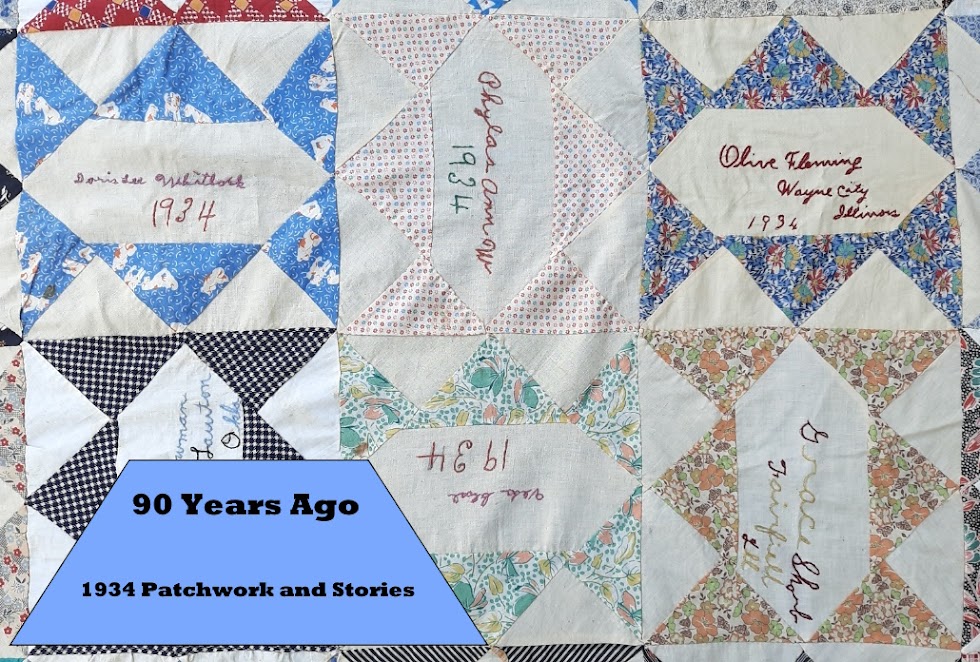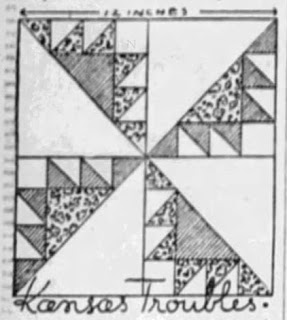“I’ll give you three guesses as to the name of this quilt. It comes to us from the collection of Miss Beamer of Thorold, Canada. She says she enjoys collecting quilt patterns. This one is taken from a quilt her grandmother made 60 years ago. What shall we call the pattern?”
The Nancy Page quilt club members put their wits to work. “It looks like a modification of the Jewel quilt. Could we call it the quilt of gems?”
“It looks to me like a variation of the ‘triple Irish chain.’ Why can’t we call this the Canadian chain since it comes from Canada?”
“You know, Nancy, I think that the pattern looks like steps leading to a platform or landing place. Can’t we call it a stepping pattern of some sort?”
Nancy smiled. “The pattern is called, according to Miss Beamer, ‘Steps to the Lighthouse.’ I suppose we could make it steps to almost anything.
“But since a lighthouse is near the sea it seems wise, if you choose that name to develop the quilt in blue and white. The blue representing the sea. Only in that case we shall have to make the lighthouse blue also, if we say the center square represents the building."
from The Atlanta Constitution, Georgia January 16, 1934

And something from the stash for the back.





